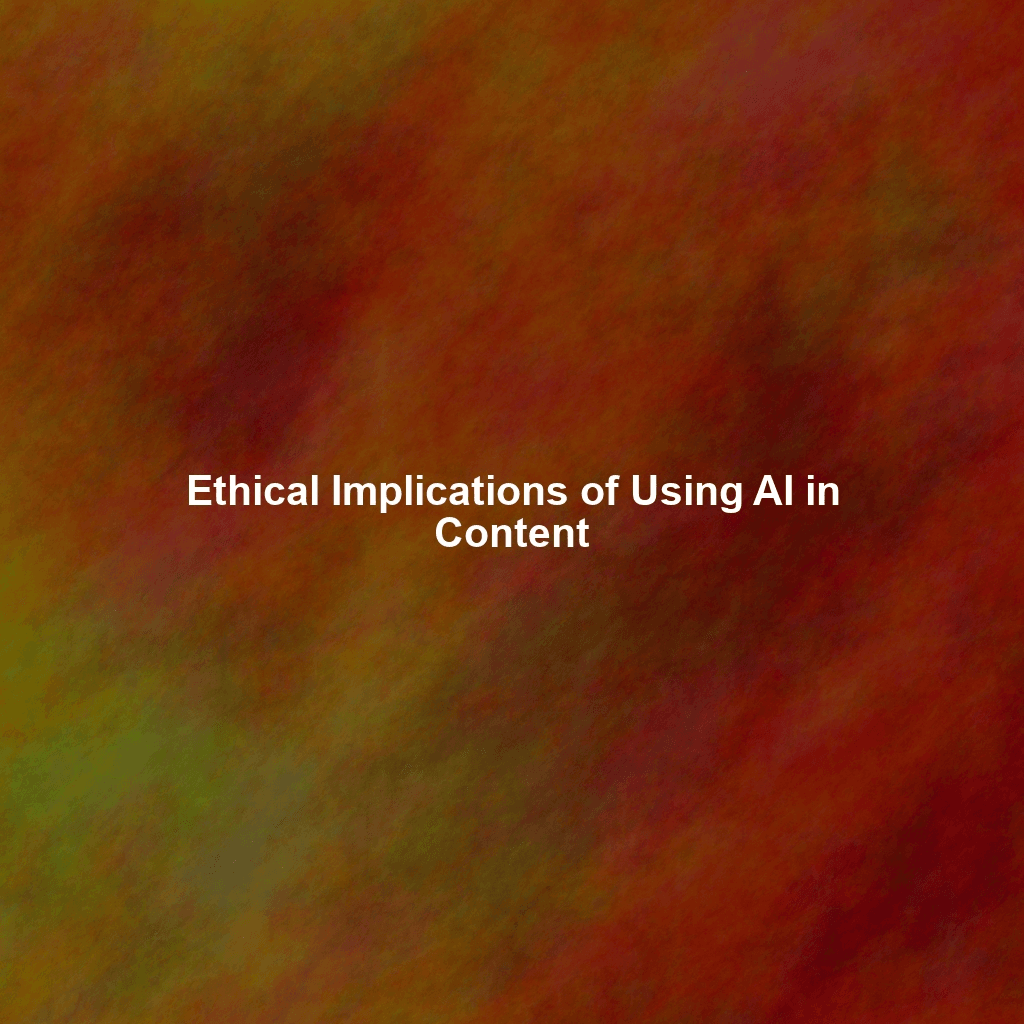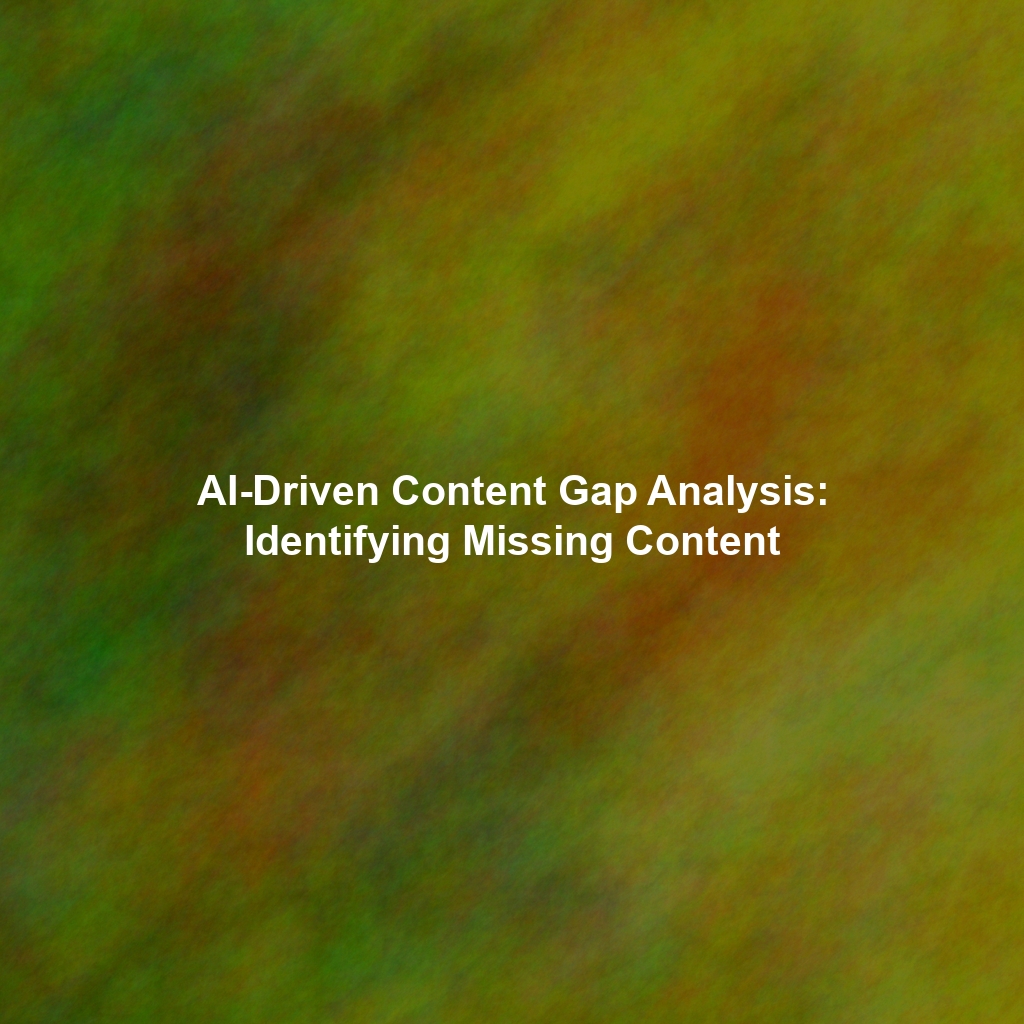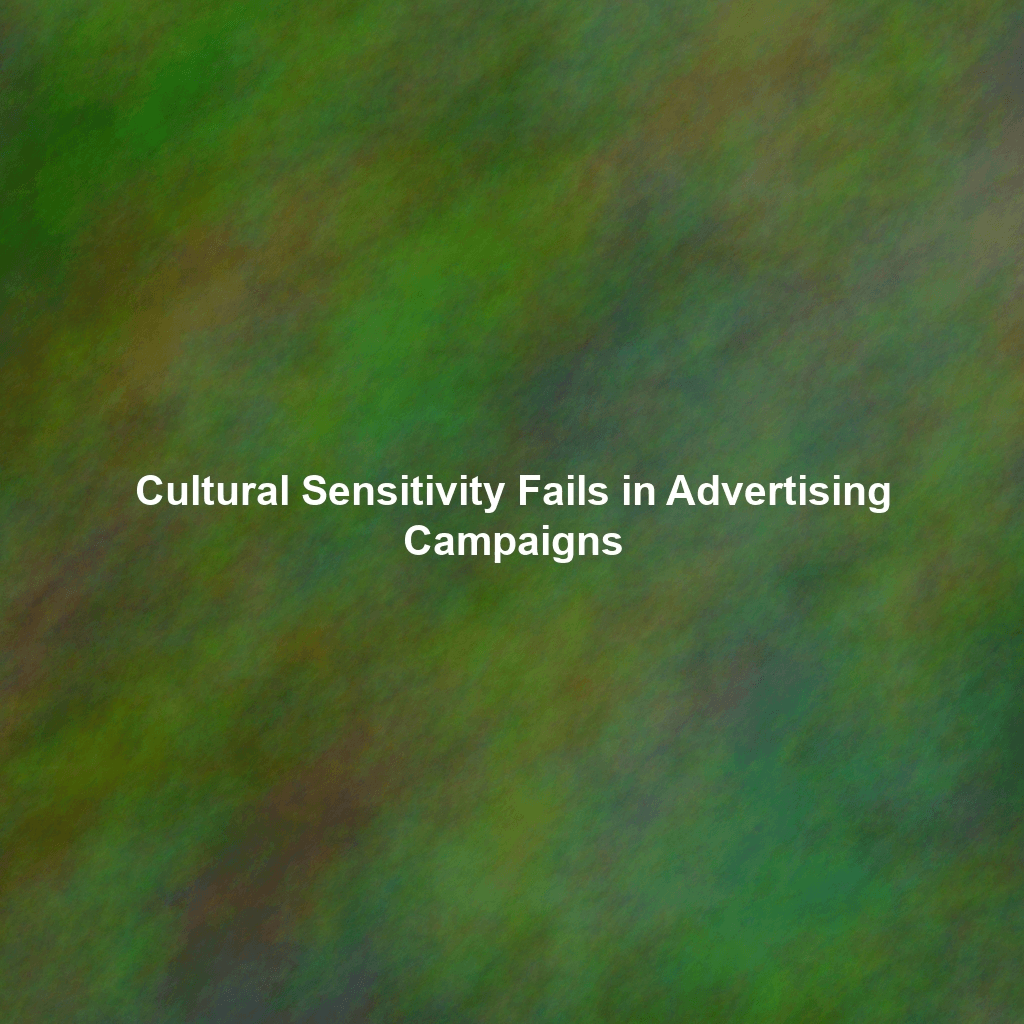The Double-Edged Sword: Ethical Implications of Using AI in Content Creation
Artificial intelligence is rapidly transforming the content landscape, offering unprecedented opportunities for efficiency and personalization. From generating blog posts and social media updates to crafting compelling ad copy and even writing code, AI tools are becoming increasingly sophisticated. However, this technological revolution also raises significant ethical questions that content creators, marketers, and consumers must confront. Ignoring these implications could lead to serious consequences for trust, accuracy, and the very fabric of creative expression.
The Rise of AI in Content Marketing: A Brief Overview
Before diving into the ethical dilemmas, it’s crucial to understand the scope of AI’s influence in content marketing. AI-powered tools are now capable of:
- Content Generation: Creating articles, blog posts, website copy, and marketing materials.
- Content Optimization: Analyzing data to improve content performance, including SEO and engagement metrics.
- Personalization: Tailoring content to individual user preferences and behaviors.
- Content Curation: Identifying and aggregating relevant content from various sources.
- Image and Video Creation: Producing visual content with minimal human intervention.
This widespread adoption of AI in content is driven by the promise of increased efficiency, scalability, and cost-effectiveness. But with great power comes great responsibility, and it’s essential to critically examine the ethical considerations involved.
Ethical Concerns: A Deep Dive
Several key ethical issues arise when integrating AI into content creation workflows:
1. Bias and Representation
AI models are trained on vast datasets, and if these datasets reflect existing societal biases, the AI will inevitably perpetuate and even amplify those biases in the content it generates. This can lead to discriminatory or unfair representations of certain groups based on gender, race, religion, or other protected characteristics.
For example, an AI trained on a dataset dominated by Western perspectives might generate content that inadvertently marginalizes or misrepresents other cultures. Similarly, an AI trained on data that reflects gender stereotypes might produce content that reinforces those stereotypes.
Mitigation Strategies:
- Data Audits: Regularly audit training datasets to identify and mitigate biases.
- Diverse Datasets: Use diverse and representative datasets to train AI models.
- Bias Detection Tools: Employ tools that can detect and flag biased content generated by AI.
- Human Oversight: Implement human review processes to ensure that AI-generated content is free from bias.
2. Transparency and Disclosure
A fundamental ethical principle is transparency. Consumers have a right to know whether the content they are consuming was created by a human or an AI. Failing to disclose the use of AI can erode trust and lead to accusations of deception.
Consider the implications of consuming news articles written by AI without any indication of their origin. This could lead to a distorted perception of reality and undermine the credibility of journalism.
Implementation Guidelines:
- Clear Disclosure: Clearly indicate when content has been generated or assisted by AI.
- Transparency Standards: Develop industry-wide standards for AI transparency in content creation.
- Consumer Education: Educate consumers about the capabilities and limitations of AI in content.
3. Intellectual Property and Originality
AI models learn by analyzing existing content, raising questions about copyright infringement and originality. If an AI generates content that closely resembles existing works, it could potentially violate intellectual property laws. Furthermore, the very notion of originality is challenged when content is produced by an algorithm rather than a human mind.
Imagine an AI writing a song that sounds strikingly similar to a popular hit. Who owns the copyright in this scenario? The user who prompted the AI? The developers of the AI model? Or does the song belong to no one?
Best Practices:
- Copyright Compliance: Ensure that AI-generated content does not infringe on existing copyrights.
- Originality Checks: Use plagiarism detection tools to verify the originality of AI-generated content.
- Terms of Service: Review the terms of service of AI content generation tools to understand ownership and usage rights.
4. The Impact on Human Creators
The rise of AI in content creation has the potential to displace human creators, particularly those involved in repetitive or low-skilled tasks. This can lead to job losses and economic hardship for individuals who rely on content creation for their livelihood. Furthermore, the over-reliance on AI could stifle human creativity and innovation.
While AI can augment and enhance human capabilities, it’s crucial to find a balance that preserves the value of human skills and expertise.
Strategies for a Balanced Approach:
- Upskilling and Reskilling: Invest in training programs to help content creators acquire new skills that complement AI technologies.
- Focus on Creativity and Strategy: Encourage human creators to focus on high-level tasks such as strategy, ideation, and creative direction.
- AI as a Tool, Not a Replacement: View AI as a tool to assist human creators, rather than a replacement for them.
5. Misinformation and Manipulation
AI can be used to generate convincing but false or misleading content, which can be used to spread misinformation, manipulate public opinion, and even incite violence. The ease with which AI can create realistic fake news articles, deepfake videos, and synthetic images poses a serious threat to the integrity of information ecosystems.
Consider the potential for AI to generate highly believable but entirely fabricated stories about political candidates or public figures. This could have a devastating impact on elections and democratic processes.
Safeguards Against Misinformation:
- Watermarking and Authentication: Develop technologies to watermark AI-generated content and authenticate its source.
- Fact-Checking and Verification: Invest in fact-checking initiatives to identify and debunk false or misleading content.
- Media Literacy Education: Educate the public about how to identify and evaluate AI-generated content.
6. Data Privacy and Security
AI models require access to vast amounts of data, including personal information, to generate personalized content. This raises concerns about data privacy and security, as sensitive information could be compromised or misused. It’s crucial to ensure that AI content creation tools comply with data privacy regulations and implement robust security measures to protect user data.
For instance, if an AI is used to generate personalized marketing emails, it must comply with data privacy laws such as GDPR and CCPA. Failure to do so could result in significant penalties and reputational damage.
Protecting Data Privacy:
- Data Minimization: Collect only the data that is necessary for content generation.
- Data Anonymization: Anonymize or pseudonymize data whenever possible.
- Data Security Measures: Implement robust security measures to protect data from unauthorized access.
The Future of Ethical AI in Content
Addressing the ethical implications of AI in content creation is an ongoing process. It requires a collaborative effort involving content creators, marketers, AI developers, policymakers, and consumers. By embracing transparency, promoting fairness, and prioritizing human values, we can harness the power of AI to create content that is both effective and ethical.
Looking ahead, several key developments will shape the future of ethical AI in content:
- AI Ethics Frameworks: The development and adoption of standardized AI ethics frameworks to guide responsible AI development and deployment.
- Explainable AI (XAI): The development of AI models that are transparent and explainable, allowing users to understand how they make decisions.
- Human-AI Collaboration: The emergence of collaborative workflows that leverage the strengths of both humans and AI to create high-quality, ethical content.
- Regulation and Oversight: The implementation of regulations and oversight mechanisms to ensure that AI is used responsibly and ethically in content creation.
Conclusion: Navigating the Ethical Landscape
AI’s impact on content is undeniable, offering benefits in efficiency and personalization. However, it’s crucial to acknowledge and address the ethical challenges that accompany this technological advancement. By prioritizing transparency, fairness, and human values, we can navigate the ethical landscape of AI in content creation and ensure that this powerful technology is used for good. The future of content hinges on our ability to integrate AI responsibly, fostering a creative ecosystem that benefits both creators and consumers alike.
 Skip to content
Skip to content

